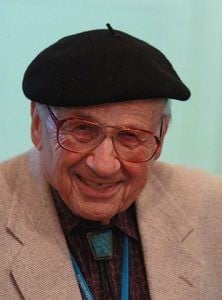In Memory of Walter Kohn—Advances in Density Functional Theory
A special issue of Computation (ISSN 2079-3197). This special issue belongs to the section "Computational Chemistry".
Deadline for manuscript submissions: closed (20 August 2018) | Viewed by 49616
Special Issue Editors
Interests: density functional theory (DFT); semi-local approximations; electronic structure methods; Exact Muffin-Tin Orbitals method (EMTO); mechanical properties; magnetic properties; metal surfaces; defects; steels; high entropy alloys; magnetocaloric materials
Interests: density functional theory (DFT); electronic structure of solids and interfaces; strain engineering; ab initio treatment of magnetism, lattice vibrations, and superconductivity; steels; high entropy alloys
Interests: density functional theory (DFT); electronic structure of solids and surfaces; chemical bonding; spectra; high-performance computing; Wien2k code
Special Issues, Collections and Topics in MDPI journals
Special Issue Information

In Memoriam Walter Kohn (1923--2016)
Dear Colleagues,
This Special Issue will consist of selected excellent papers from the “17th International Conference on Density Functional Theory and Its Application” (DFT2017), which will be held in Tällberg (Dalarna), Sweden, from 21 to 25 August 2017. This international conference is dedicated to Walter Kohn in memory of his essential contributions to this field. Contributers will be invited to submit and present papers in a wide variety of areas from concepts to applications. Topics of selected papers will include various method developments and applications to molecules, solids, surfaces and biomolecules. Related submissions outside the conference are also very welcome.
This Special Issue is dedicated to demonstrating recent advances in studying the electronic structure for a variety of systems in their ground state or excited state, from regular to highly correlated systems. Papers may report on original research, discuss methodological aspects, review the current state-of-the-art, or offer perspectives on future prospects.
These papers will be subjected to peer review and are published so as to widely disseminate new research results, including developments and applications.
The authors of papers submitted to the DFT2017 conference (http://www.dft2017.conf.kth.se) will be given the opportunity to submit extended versions of their works in this Special Issue, provided they fulfil the specific journal requirements found at https://www.mdpi.com/journal/computation/instructions.
Prof. Dr. Levente Vitos
Dr. Stephan Schönecker
Prof. Dr. Karlheinz Schwarz
Guest Editors
Manuscript Submission Information
Manuscripts should be submitted online at www.mdpi.com by registering and logging in to this website. Once you are registered, click here to go to the submission form. Manuscripts can be submitted until the deadline. All submissions that pass pre-check are peer-reviewed. Accepted papers will be published continuously in the journal (as soon as accepted) and will be listed together on the special issue website. Research articles, review articles as well as short communications are invited. For planned papers, a title and short abstract (about 100 words) can be sent to the Editorial Office for announcement on this website.
Submitted manuscripts should not have been published previously, nor be under consideration for publication elsewhere (except conference proceedings papers). All manuscripts are thoroughly refereed through a single-blind peer-review process. A guide for authors and other relevant information for submission of manuscripts is available on the Instructions for Authors page. Computation is an international peer-reviewed open access monthly journal published by MDPI.
Please visit the Instructions for Authors page before submitting a manuscript. The Article Processing Charge (APC) for publication in this open access journal is 1800 CHF (Swiss Francs). Submitted papers should be well formatted and use good English. Authors may use MDPI's English editing service prior to publication or during author revisions.
Keywords
-
Density functional theory and the choice of functionals
-
Time-dependent DFT
-
Strongly correlated systems
-
applications of the DFT to solids, molecules and biosystems
-
Ground state, reactions and excited states





